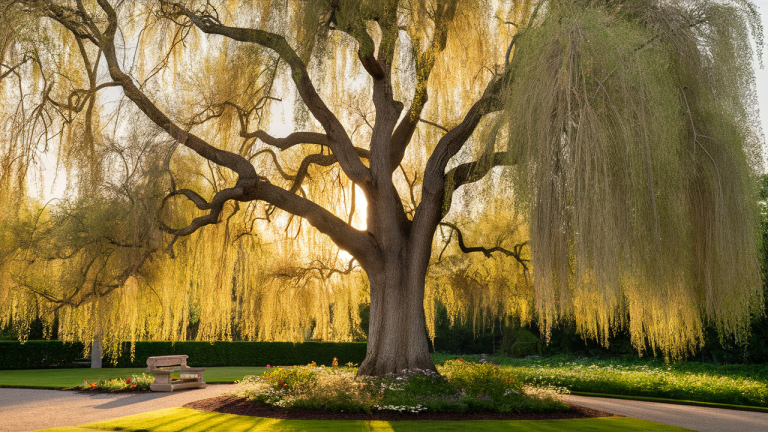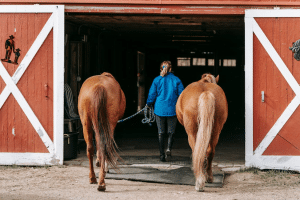Weeping trees bring a unique attraction to any garden, with their graceful, drooping branches creating a soft, polished look. Among them, the weeping oak stands out as a beautiful variant of the traditional oak tree.
In this article, we’ll explore what makes the weeping oak such a special choice for landscaping. You’ll learn about its ideal growing conditions, how to care for it, and how to use it to enhance your garden.
I understand that finding the right tree for your space can be tricky, but don’t worry—I’m here to help. By the end of this guide, you’ll have a clear idea of how to plant and care for your weeping oak tree successfully.
Trust that this information will solve your gardening challenges and give you the confidence to make the best choice for your yard.
What Is a Weeping Oak Tree?
A weeping oak is a special kind of oak tree. Unlike regular oaks, it has long, drooping branches that hang down gracefully. These branches give it a unique, weeping appearance, which makes it stand out in any garden.
The weeping oak is a variety of the English oak (Quercus robur). It’s often referred to as Quercus robur ‘Pendula’. This tree has the same sturdy roots and strong wood as other oaks, but its distinctive branches are what set it apart.
The tree’s unique growth habit sets it apart. While other oaks grow upward, the weeping oak grows downward. This gives it a more elegant and flowing look. It’s perfect for creating a calming space in your garden.
This tree is an excellent choice for anyone looking to add a distinctive touch. It’s not just another oak—it’s a statement in your yard.
Varieties of Weeping Oak Trees
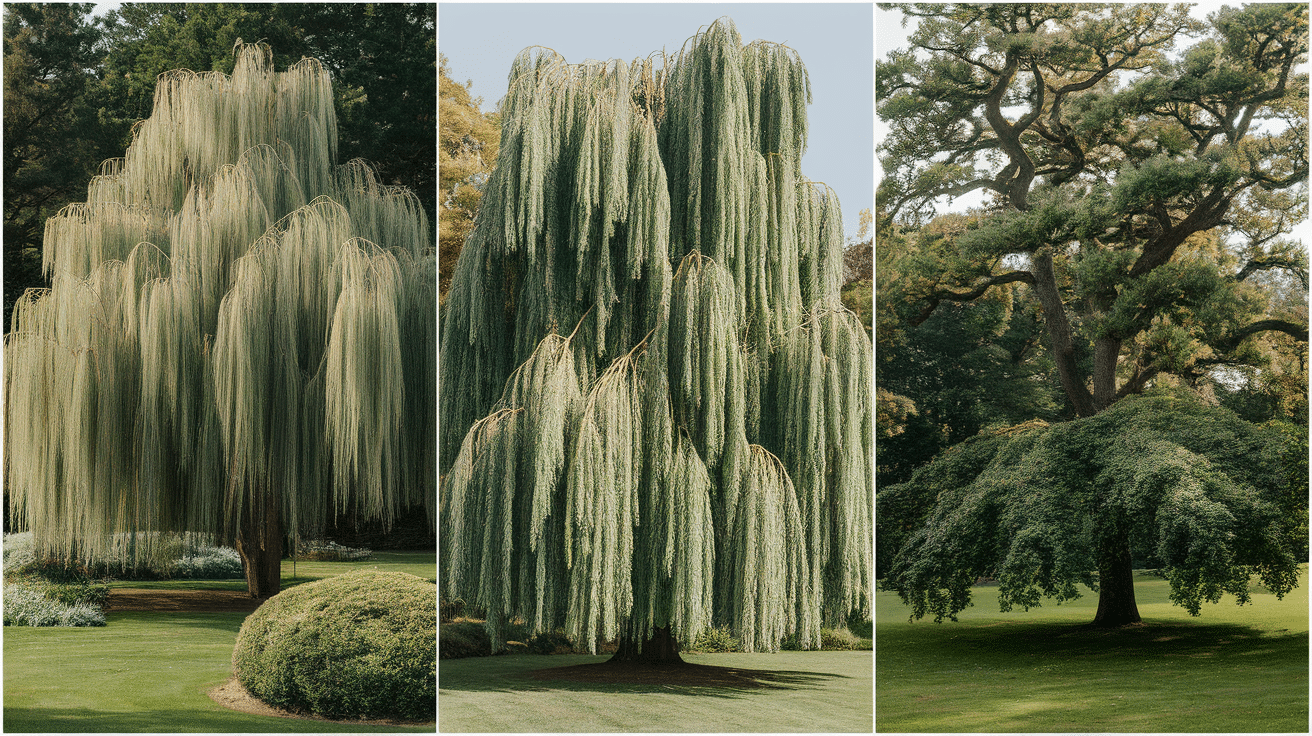
There are several types of weeping oaks, each with its charm.
Quercus robur ‘Pendula’ is the most common. Its branches hang down in a smooth, classic way. This tree is perfect for creating a soft, flowing look in your garden.
Quercus alba ‘Weeping’ is a rarer variety. It has a more dramatic weeping form. The branches droop lower, resembling a curtain of leaves. It’s perfect if you’re looking for something a little more eye-catching.
Quercus macrocarpa ‘Weeping’ is different in a few ways. It has larger acorns and a broader canopy. This tree can provide more shade, making it an excellent choice for creating a cool, shaded area.
Each variety brings something special to the table. Choose the one that fits best with your garden’s vibe.
Ideal Growing Conditions for Weeping Oak Trees
To grow a healthy weeping oak, it needs the right conditions. Here’s what you should know:
- Climate: It thrives in temperate climates. This means it prefers cooler winters and mild summers. If you live in an area with harsh winters, this tree will thrive.
- Soil: The weeping oak does best in well-drained, loamy soil. Loamy soil is rich in nutrients and drains well, which keeps the roots healthy.
- Sunlight: This tree thrives in full sunlight. Full sun is best, but it can also handle some partial shade. Therefore, if your garden receives a mix of sun and shade, the tree will thrive.
- Space: Weeping oaks can grow large. Give it enough room to spread out. Its branches need space to droop down without hitting anything.
Landscaping Ideas with Weeping Oaks
A weeping oak can be a stunning addition to your landscape.
- Focal Point: The graceful branches of the weeping oak make it an ideal central feature in a large garden. Plant it where it can be the first thing people notice.
- Shade Provider: This tree can provide much-needed shade. Its broad canopy is perfect for creating a cool spot in your lawn, especially during the hot months.
- Wildlife Habitat: The weeping oak is a popular attraction for birds and insects. These creatures will enjoy the shelter and food it provides, adding life to your garden and boosting biodiversity.
Regardless of how you use it, a weeping oak will bring both beauty and function to your outdoor space. With these conditions, your weeping oak will thrive and grow into the beautiful tree it’s meant to be.
How to Choose the Right Location for a Weeping Oak Tree
Choosing the right spot for your weeping oak is important. Here’s what to keep in mind:
- Space: Ensure the area is sufficiently large. Weeping oaks grow wide and require ample space for their branches to droop freely. Avoid crowded areas.
- Sunlight: This tree loves sunlight. Select a location that receives full sun for at least a few hours each day. If the spot has some shade, that’s fine too, but more sun is better.
- Soil: Check the soil. The weeping oak needs well-drained, loamy soil. If your soil is heavy or clay-like, consider adding compost or organic matter to improve drainage.
- Avoid Obstacles: Ensure there are no power lines, buildings, or other trees too close by. You don’t want to block its growth or risk damaging nearby structures.
Take your time choosing the best spot. With the right location, your weeping oak will thrive and bring beauty to your garden for years to come.
Weeping Oak Tree Maintenance Through the Seasons
Caring for your weeping oak throughout the year helps it stay healthy and strong. Here’s a simple guide on what to do during each season:
1. Winter

During the colder months, trees enter a natural state of dormancy, significantly slowing down their growth and water needs. As a result, minimal watering is required during winter unless there’s an unusually dry spell. It’s also important to inspect trees for any damage caused by snow or ice accumulation. Carefully remove any broken or hanging branches to prevent further injury to the tree and ensure safety around your property.
2. Spring
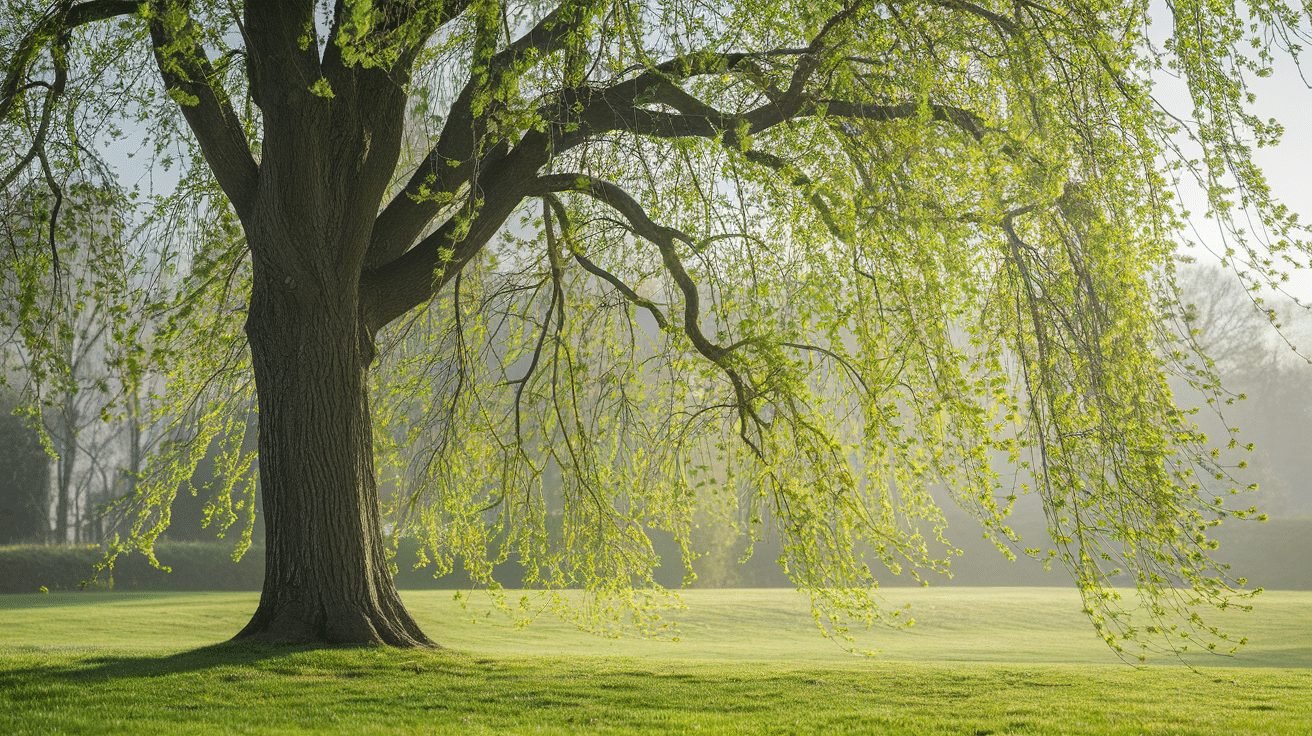
As the weather warms and spring arrives, trees awaken from dormancy and begin to grow actively again. Regular watering becomes essential during this time, especially in dry conditions, to support the development of new leaves and branches. Pruning any dead or damaged limbs not only enhances the tree’s appearance but also encourages strong, healthy growth by allowing more light and air to reach the inner canopy.
3. Summer
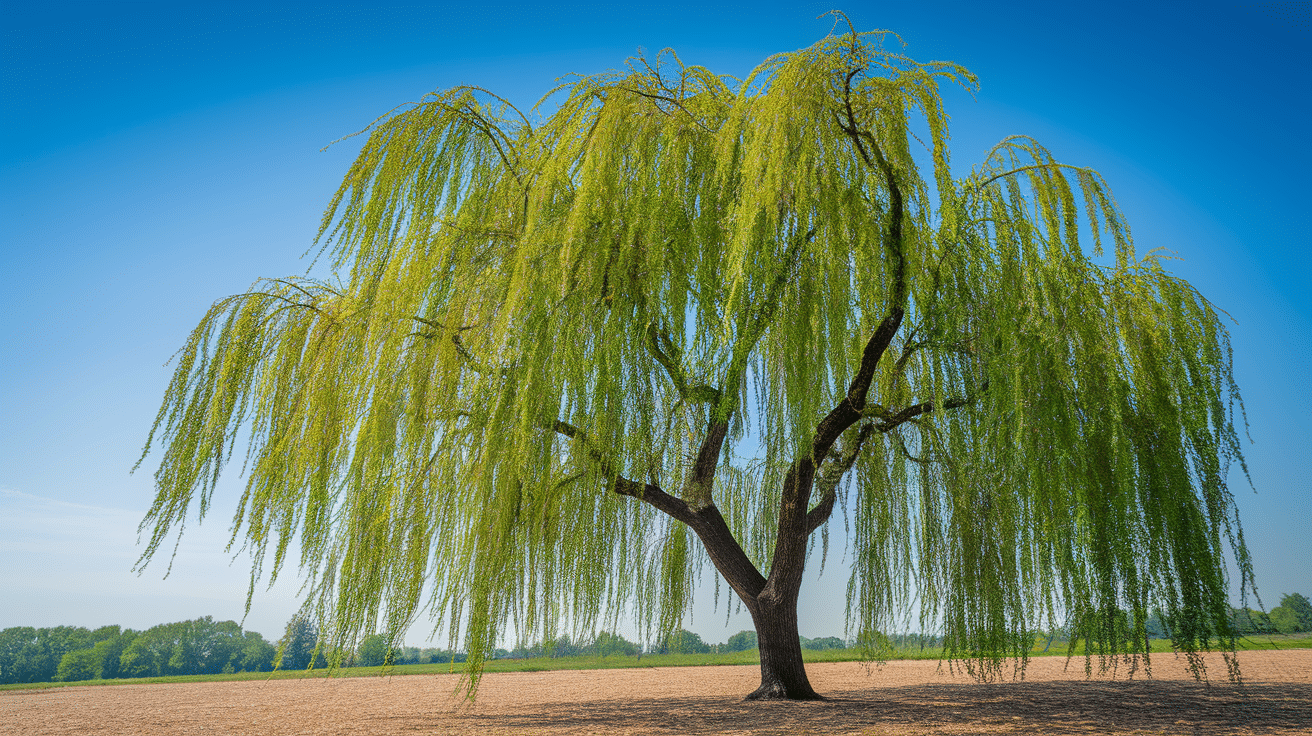
During the hot summer months, it’s crucial to ensure your tree receives ample water to cope with the heat and sustain healthy growth. Weeping oaks, which flourish in full sun, may benefit from a light layer of mulch around the base to help retain soil moisture and regulate temperature during periods of extreme heat. Additionally, keep an eye out for common summer pests such as aphids or caterpillars, which can damage foliage.
4. Fall
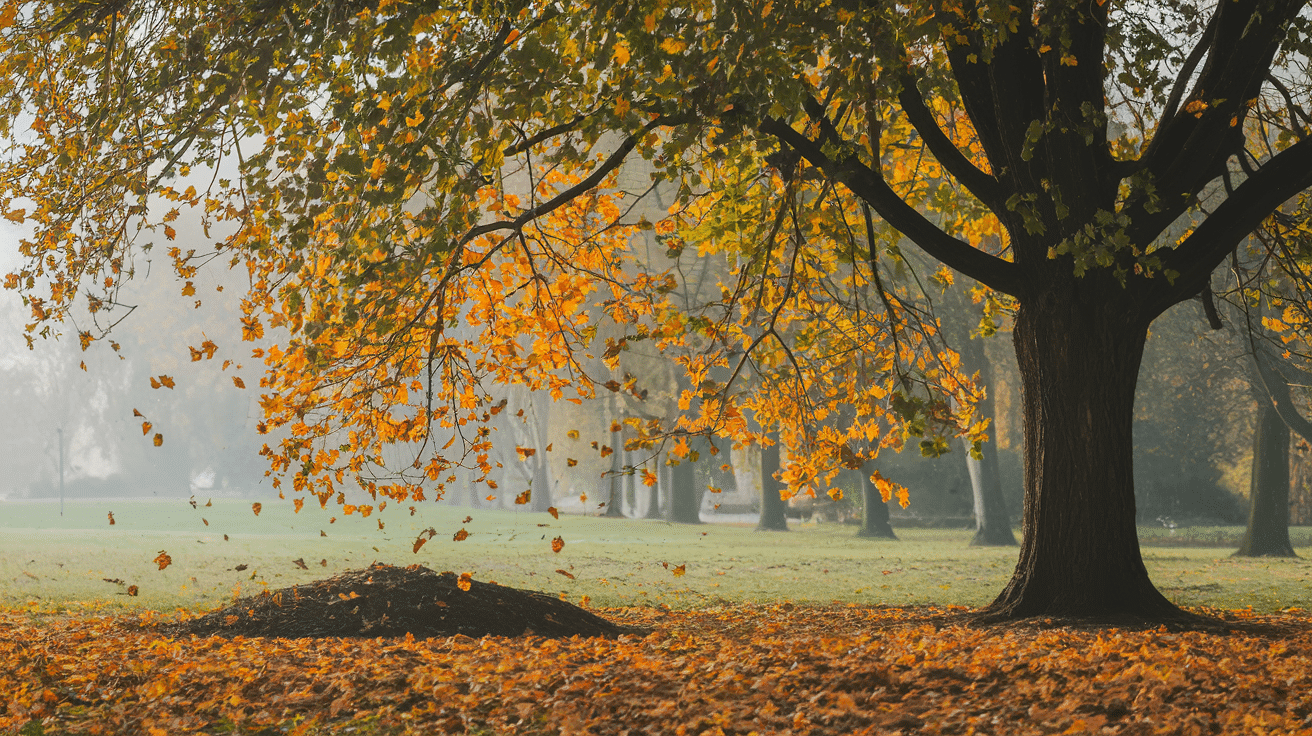
As the tree transitions into dormancy in the fall, its water requirements decrease, allowing you to gradually reduce watering. Clearing away fallen leaves is important to prevent mold growth and reduce the risk of disease taking hold in the damp, decaying matter. This season also presents an ideal opportunity to apply fertilizer, providing essential nutrients that will support root strength and overall health through the winter months and into the next growing cycle.
By following these simple steps, your weeping oak will remain healthy throughout the year. Just a little attention to its needs through each season goes a long way.
A weeping oak isn’t just a tree. It’s an addition that enhances the entire landscape. From beauty to wildlife, it offers multiple benefits for city living.
The Growth Rate of a Weeping Oak Tree: What to Expect
The growth rate of a weeping oak is moderate. It’s not the fastest-growing tree, but with the right care, it will grow steadily over time. Here’s what you need to know:
1. Speed: Expect the weeping oak to grow about 12 to 24 inches per year. This can vary depending on the conditions.
2. Factors that Influence Growth:
- Soil quality: Good, well-drained soil will help the tree grow faster.
- Watering: Regular watering, especially during dry periods, encourages healthy growth.
- Sunlight: The more sun the tree gets, the better it will grow.
- Temperature: Weeping oaks prefer cooler climates. If you live in a hotter area, it might grow more slowly.
The key is patience. Over time, your weeping oak will mature into a beautiful, stately tree. Just give it the right conditions, and it will grow into a stunning addition to your yard.
Benefits of Weeping Oak Trees in Urban Landscaping
Weeping oaks can make a big difference in urban spaces. Here’s how they can enhance your landscape:
Shade: In busy cities, finding a cool, shady spot is important. The weeping oak provides dense shade under its broad canopy. It’s perfect for creating a quiet, relaxing place in your yard or garden.
Beauty: The graceful, drooping branches of the weeping oak add a touch of elegance. This tree stands out in any landscape. Whether planted alone or as part of a larger design, it brings beauty to urban areas.
Wildlife Habitat: Weeping oaks attract a variety of birds, insects, and other wildlife. Their leaves and acorns provide food and shelter for a variety of animals. In a city, that’s a big bonus. The tree helps support biodiversity, even in urban settings.
Air Quality: Trees are natural air filters. Weeping oaks can help improve air quality, making the urban environment healthier and more pleasant.
Comparing Weeping Oak Trees with Other Weeping Tree Varieties
Weeping oak trees are unique, but how do they compare to other popular weeping trees? Let’s take a look at some common weeping varieties: weeping willows and weeping cherry trees.
Each tree has its features, and depending on your needs, one might be a better fit for your garden.
| Tree Variety | Growth Habit | Size | Sunlight Needs | Watering Needs | Special Features |
|---|---|---|---|---|---|
| Weeping Oak | Graceful, drooping branches | Medium to Large | Full sun to partial shade | Moderate watering | Strong, elegant, attracts wildlife |
| Weeping Willow | Long, pendulous branches, flowing | Large | Full sun | High watering | Fast-growing, prefers wet areas |
| Weeping Cherry | Arching branches with soft flowers | Small to Medium | Full sun | Moderate watering | Beautiful spring blooms, compact shape |
Each tree offers something unique, tailored to your space and needs. The weeping oak, with its strong presence and wildlife benefits, is ideal if you’re looking for a sturdy, elegant tree that provides shade.
Planting and Care Tips
Taking care of your weeping oak is easy if you follow a few simple steps. Here’s what you need to know:
1. Planting
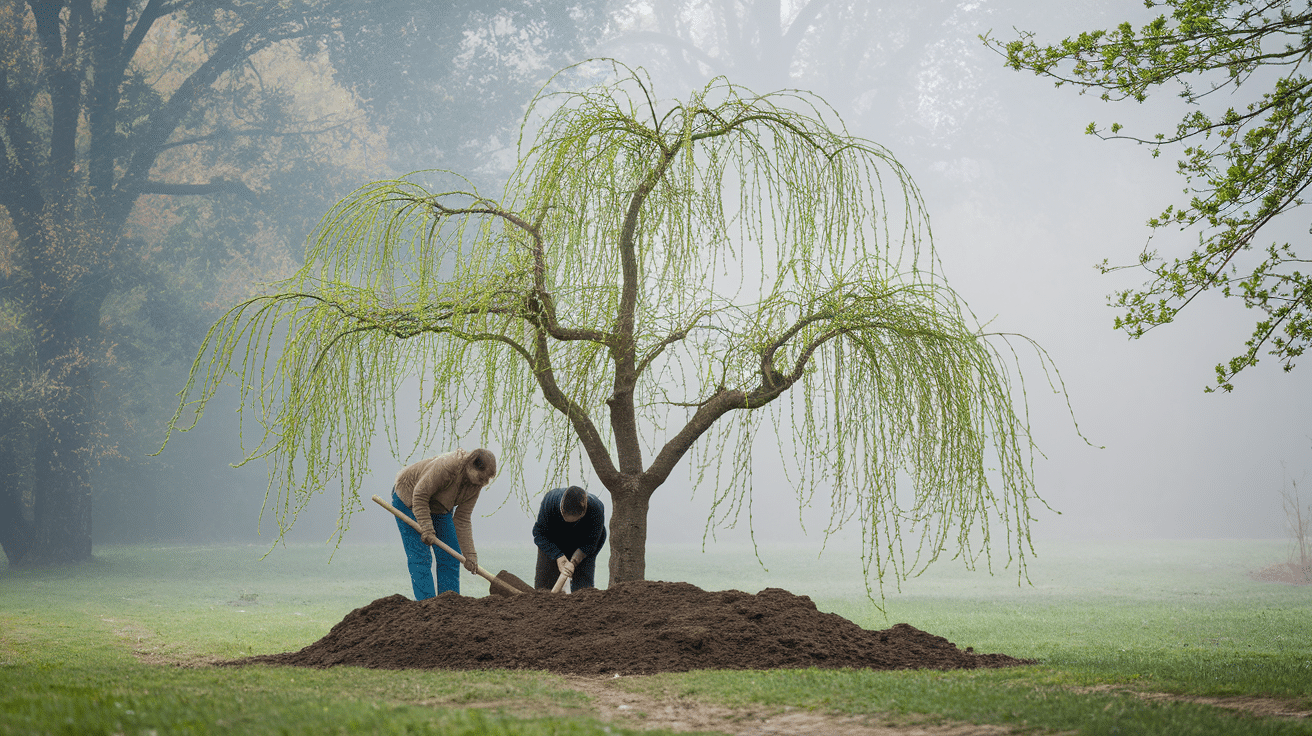
The ideal times to plant a tree are during early spring or late fall, when temperatures are milder and the tree is either just emerging from or preparing for dormancy. It’s important to ensure that the soil is neither too wet nor frozen at the time of planting, as overly saturated or hardened ground can hinder proper root development.
By choosing the right planting window and preparing the soil carefully, you give your tree the strongest possible start for long-term health and growth.
2. Watering
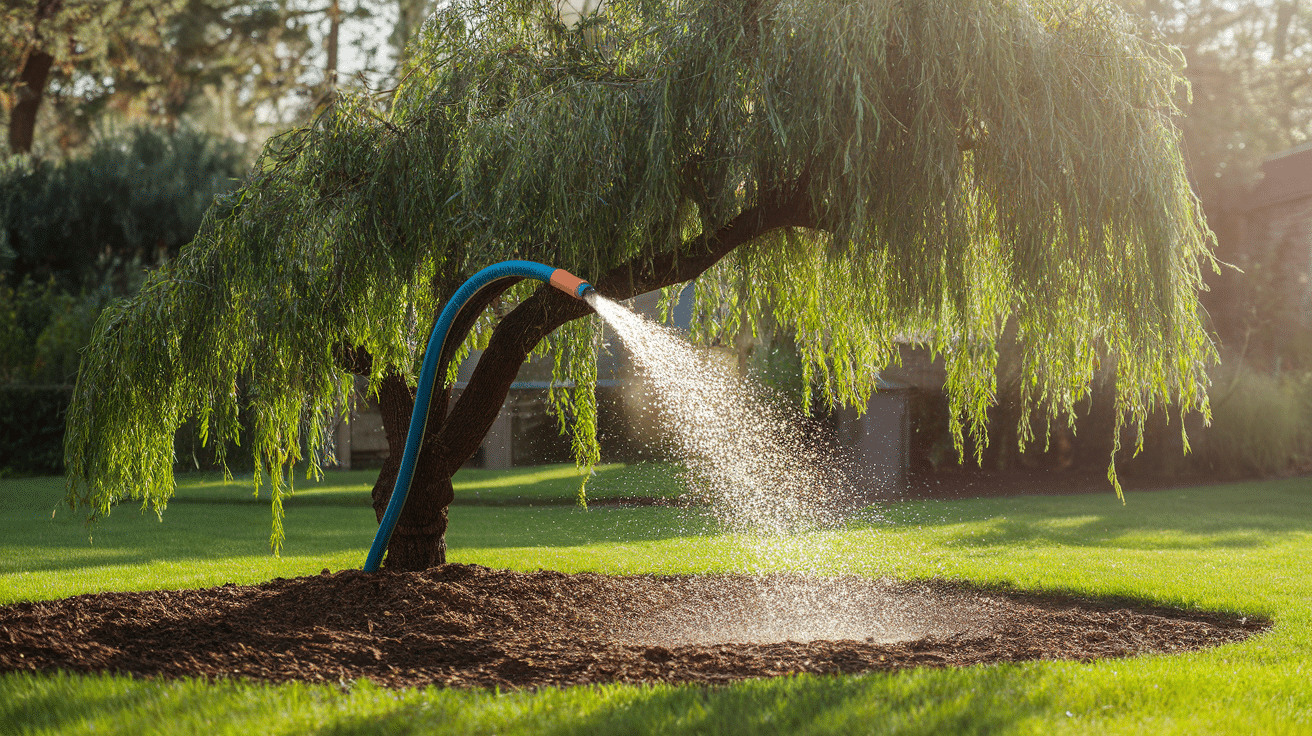
Weeping oaks require consistent watering to thrive, particularly during dry spells when natural moisture is lacking. However, it’s just as important not to overwater, as these trees do not tolerate soggy conditions well. Waterlogged soil can lead to root rot and other issues, so be sure the soil around the tree drains well.
A good rule of thumb is to keep the soil moist but not saturated—check a few inches below the surface to ensure it feels damp but not waterlogged.
3. Pruning
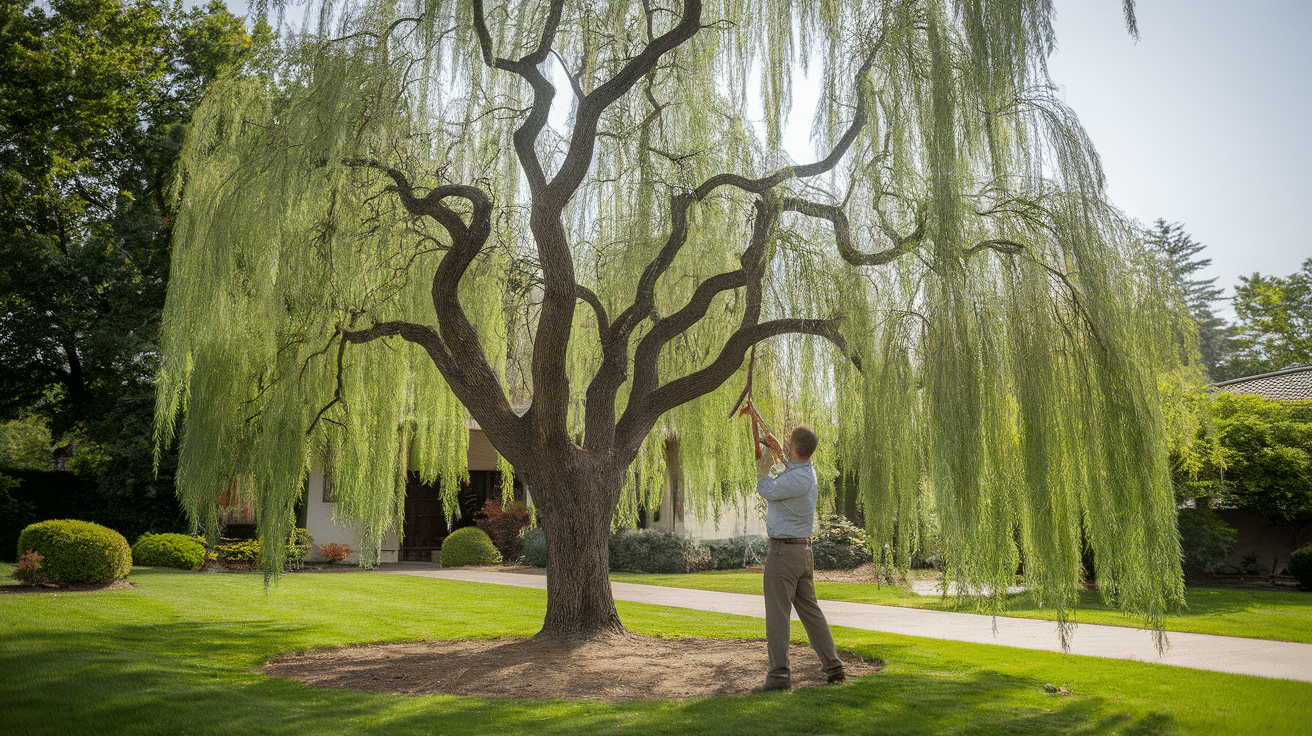
Weeping oaks don’t require much pruning to stay healthy. Their natural shape is part of their beauty, so it’s best to let them grow freely. Just check the tree from time to time and remove any branches that are dead, damaged, or diseased.
A little light maintenance goes a long way in keeping your weeping oak strong and attractive.
4. Fertilization
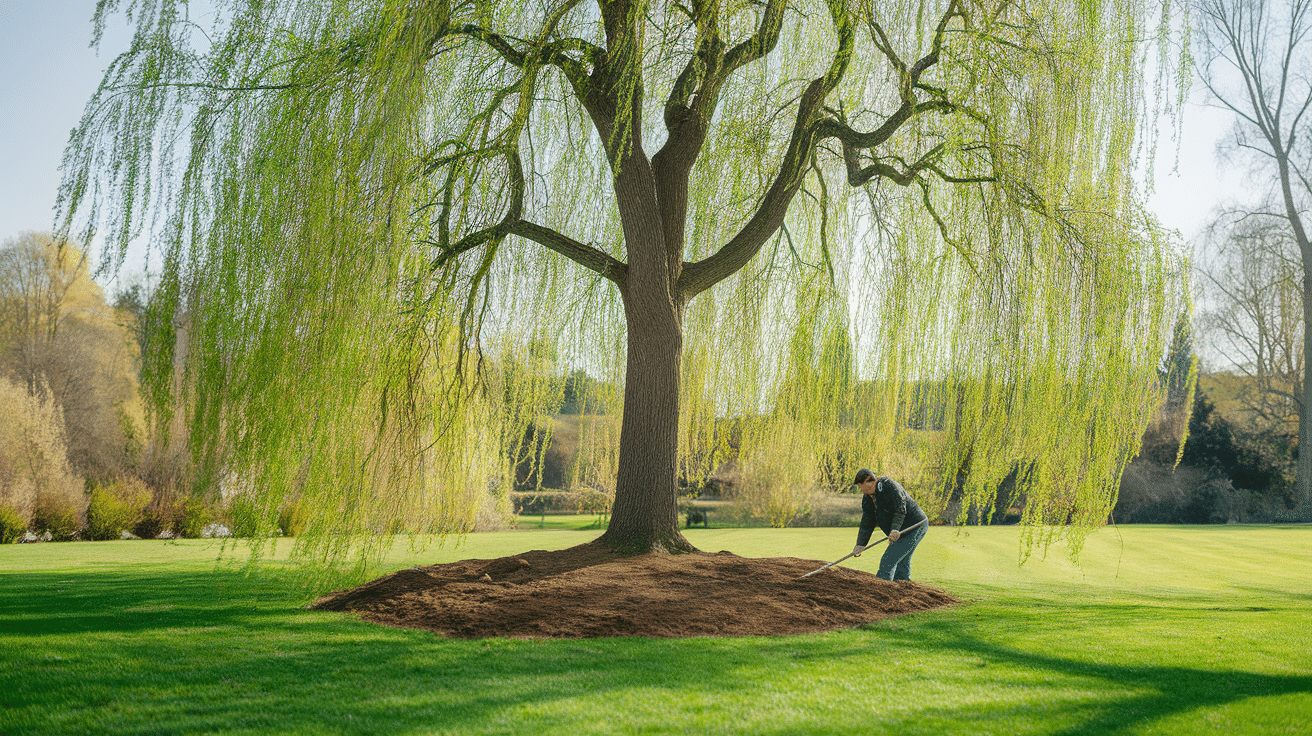
Apply a balanced fertilizer in early spring, just as the tree begins to come out of dormancy. This provides essential nutrients at the right time, supporting strong root development, healthy foliage, and overall growth. Using a well-rounded fertilizer ensures the tree gets the proper mix of nitrogen, phosphorus, and potassium it needs for the growing season.
By following these tips, your weeping oak will thrive and stay beautiful for years to come. Just a little care goes a long way.
Conclusion
Planting a weeping oak tree offers many benefits. Its graceful, drooping branches create a beautiful focal point in any garden. The tree provides shade, supports wildlife, and adds a touch of elegance to your landscape. It’s also low-maintenance, requiring only occasional attention throughout the year.
If you’re looking for a tree that combines beauty, strength, and environmental benefits, the weeping oak is a perfect choice. It’s an excellent addition to any landscaping project, big or small. Consider adding one to your garden—it will bring lasting beauty and a peaceful vibe to your outdoor space. The weeping oak is not just a tree, but a statement piece that enhances your yard’s overall charm. Its timeless beauty and easy care make it a worthwhile investment for any landscape.


